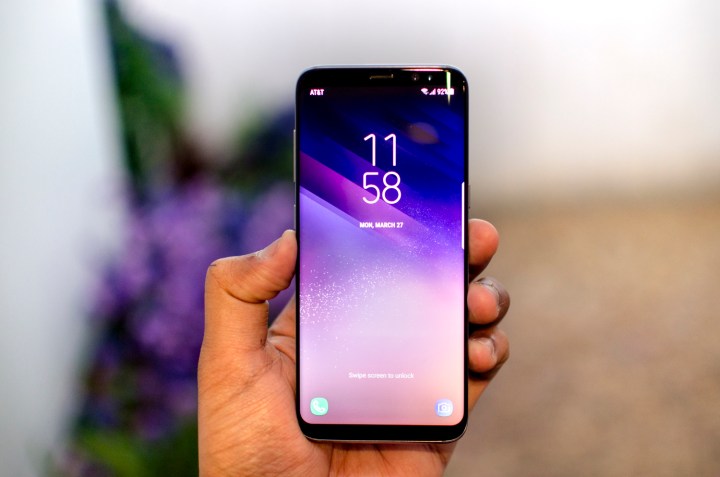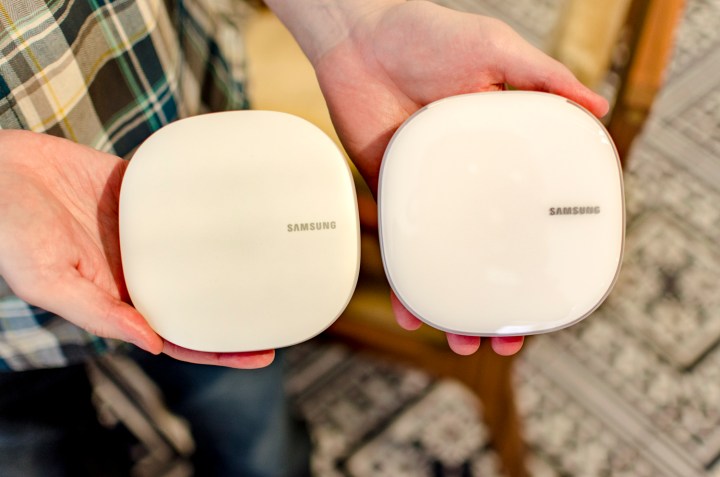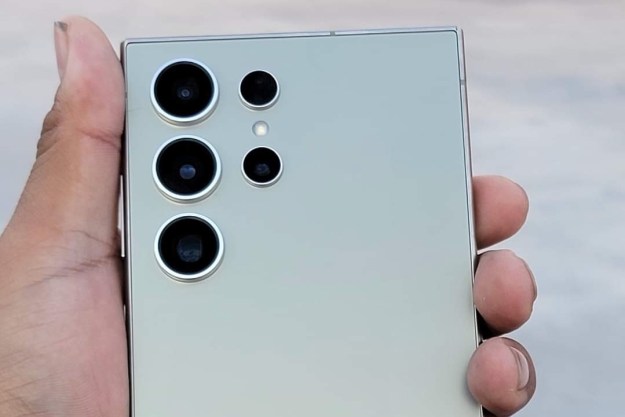
Those two phones, however, weren’t the only products unveiled during the event. In fact, we saw quite a number of exciting new products from Samsung. If you didn’t tune into the livestream, we’ve rounded up everything you missed at
Samsung Galaxy S8 and S8 Plus
The headlining products and the worst-kept secret, the
Under the hood, the U.S. model of the phone will use Qualcomm’s Snapdragon 835 processor, while Samsung’s comparable Exynos 9 Series 8895 processor will be in the international model). The S8 and S8 Plus come with 4GB of RAM, and a hefty 64GB of storage. It also boasts a 12-megapixel rear-facing camera and 8-megapixel selfie camera. The only difference between the two, other than size, is battery — the S8 has a 3,000mAh battery capacity, while the S8 Plus packs a 3,500mAh capacity. Realistically, this will mean slightly better battery life for the Plus, but both will still get about a day and a half, like usual.
Another headlining feature on the phone is Bixby, Samsung’s new digital assistant aimed at going head to head with the likes of the Google Assistant, Amazon’s Alexa, and Apple’s Siri. There’s also facial recognition technology, a fingerprint sensor, iris-scanning software, a sleek TouchWiz user interface, and more.
You can check out our initial thoughts on the new Samsung Galaxy S8 here.
Samsung DeX dock station for the Galaxy S8
You can connect the Samsung
Non-supported
In our initial impressions, the
Samsung Gear 360

Samsung has long been one of the more involved companies when it comes to virtual reality, and it’s showing no signs of slowing in its efforts. At Samsung Unpacked, the company unveiled the new Samsung Gear 360 — a new 360-degree camera that offers two 8.4-megapixel cameras that can capture
Instead, this new model’s focus is compatibility. The original Samsung Gear 360 was only compatible with a few flagship Samsung devices, but the new model works with recent Samsung flagships,
Samsung Gear VR
The Gear 360 isn’t Samsung’s only VR-related product. In fact, the company also launched an all-new version of the Samsung Gear VR headset. The headset itself is largely the same as the older model, but now the headset comes bundled with the controller that debuted at Mobile World Congress. That controller offers a clickable touchpad like the Google Daydream controller, as well as a trigger, a home button, a back button, and a volume button. It also packs an accelerometer, gyroscope, and a magnetic sensor. It does use AAA batteries, however. Assuming 2 hours of use per day, it should last 40 days.
The update to the Gear VR headset is more about the controller, and how it can add new experiences to games and applications.
Samsung Connect and Connect Pro
Samsung is following Google’s steps with the introduction of a mesh network router called Samsung Connect. What’s unique is that it also doubles as a SmartThings hub. (SmarThings is Samsung’s Internet of Things platform.) Using the Samsung Connect app on your
Editors' Recommendations
- Samsung has a new (and cheaper) way to buy the Galaxy S23
- The Samsung Galaxy S24 just failed a critical durability test
- There’s something Samsung didn’t tell you about the Galaxy S24
- One of the Galaxy S24’s coolest features is coming to other Android phones
- This is the official date Samsung will announce the Galaxy S24






